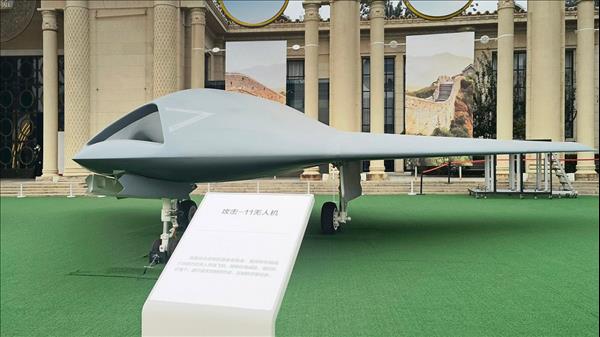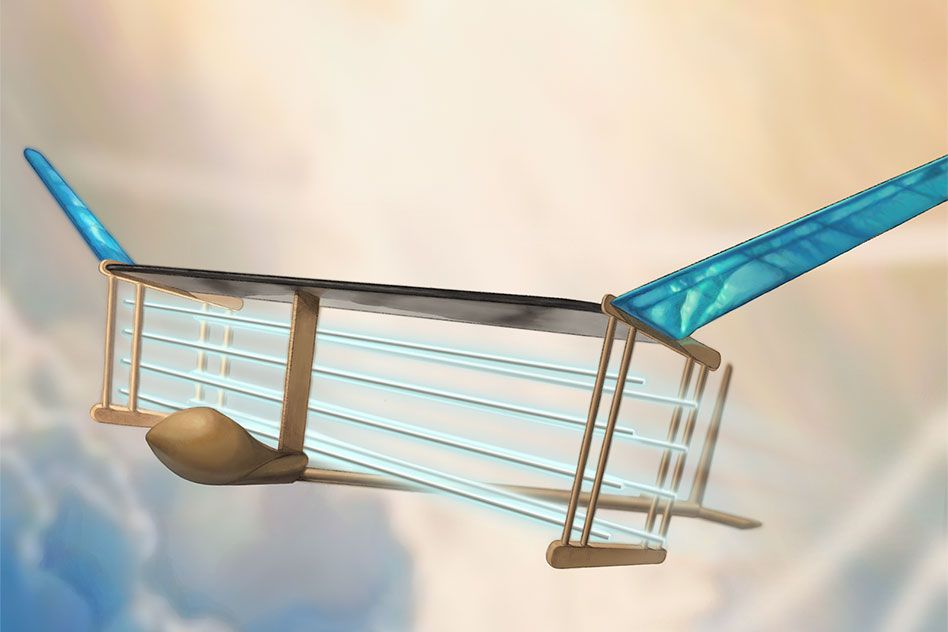beijingwalker
ELITE MEMBER

- Joined
- Nov 4, 2011
- Messages
- 65,191
- Reaction score
- -55
- Country
- Location
China's New Stealth Drone May Revolutionize Next-Gen Fighter
2/10/2023 1:07:16 AMChina has been testing a new stealth drone design that does away with moving control surfaces and uses bursts of compressed air to maneuver. This testbed drone could influence its upcoming sixth-generation fighter designs.
The new drone features active flow control (AFC) technology, which uses bursts of high-pressure air from actuators embedded in the aircraft's body for maneuvering instead of traditional moving control surfaces such as ailerons, rudders, and elevators.
This week, the south china morning post reported that researchers with the China Aerodynamics Research and Development Center in Sichuan had tested a new flying-wing drone that uses AFC technology.
The SCMP reports that in a paper published on January 19 in the peer-reviewed journal Acta Aeronautica et Astronautica Sinica, Chinese researchers said that during the test flight, the drone climbed, rolled, and adjusted to turbulence imbalances while its ailerons were locked in place.
The source says that feat was accomplished by an actuator harnessing compressed air from the drone's engine and placed under the wing that controlled airstreams in different directions. The actuator generated enough torque for steering by forming a powerful but carefully calibrated layer of air around the drone's wings, enabling it to maneuver as effectively as aircraft with moving control surfaces.
The researchers noted that their drone was able to carry out smooth and quick maneuvers, with a response of less than 0.02 second from order to action, which is well within the capabilities of its flight computer.
The SCMP report says this technology has significant implications for designing stealth aircraft, especially in maintaining stealth shaping.
“The shape of a stealth aircraft has been carefully designed for aerodynamics and low observation,” says Zhang Liu, a scientist who led the research team at the exact center involved in designing China's J-20 fifth-generation stealth fighters, and hypersonic weapons, as quoted by the source.
As reported by the SCMP, the research team found that mechanical control surfaces could disrupt the careful shaping of stealth aircraft by producing gaps, sharp edges, and bumps, bringing additional drag and radar reflection areas.
However, according to the source, the research team noted that drawing too much fresh air from the aircraft's engine could result in a loss of thrust. Despite that, the SCMP reports that the research team's design diverts excess air from the drone engine's compressor, effectively“decoupling” gas collection and thrust generation. It also says the researchers found a way to cool large volumes of hot airflow, but did not disclose how.
Not to be outdone, this month aerospace testing international reported that US researchers had accomplished a similar feat as their Chinese counterparts, successfully testing a jet-powered sub-scale tailless aircraft. The source notes that the US team's drone used a combination of conventional control surfaces and AFC technology to maneuver.
The source reports that the US team launched their drone from Pendleton Unmanned Aircraft System (UAS) Range in Oregon last October for two nine-minute flights.
Aerospace Testing International reports that during each flight, one pilot launched the drone with conventional controls, switched to AFC mid-flight, and handed over control to another pilot.
The source notes that it initially took a lot of work to keep control of the drone. Still, as the pilots gained confidence in their skills, they could execute roll and pitch maneuvers to test their AFC's ability to steer the drone at steep angles and noted that the AFC system generated more power than predicted in wind-tunnel tests.
The source also says AFC has the potential to allow maneuvers that are impossible with traditional moving control surfaces, including high-speed turns and flying at angles that would make conventional control surfaces ineffective. This ability could be helpful in within-visual-range (WVR) aerial engagements and air combat maneuvering.
In addition, asia times has reported on another US AFC-technology project called the Control of Revolutionary Aircraft with Novel Effector (CRANE) X-Plane program. As with China's new flying-wing drone, the X-Plane features no moving control surfaces. But in contrast to China's AFC stealth drone, which has already been tested, the X-Plane is still in development, with a high subsonic demonstration flight planned in 2025.
Active flow control may be one of many new technologies featured in China's future combat aircraft designs, with potentially more advanced versions of AFC in the pipeline. In line with this, China developed plasma AFC technology last August that could be integrated into its upcoming H-20 stealth bomber.
Unlike traditional AFC, which uses high-pressure air to maneuver an aircraft, plasma AFC works by using a thin membrane in front of a flying wing aircraft, which ionizes air molecules. The ionized air molecules generate a plasma shower that accelerates the airflow, which can keep the aircraft from stalling if it goes down a particular airspeed.
For example, China's plasma AFC is claimed to prevent stalls even if the aircraft's speed drops to an unusually low 108km/h.
Apart from that, AFC technology may feature in China's sixth generation of fighters. The scmp reported last month that the Aviation Industry Corporation of China (AVIC), a leading Chinese state-owned aerospace corporation known for producing fighters such as the J-20, J-16, and J-10, released concept art of a sixth-generation fighter showing a tailless design.
asia times has previously noted that while there is no universally agreed definition of what a sixth-generation fighter is, such designs will likely include emerging technologies such as modular design, machine learning, artificial intelligence, virtual and augmented reality, manned-unmanned teaming, optionally manned capability, and most likely China's take on AFC technology.
As reported by the SCMP, China's sixth-generation concept art shows three aircraft resembling the fifth-generation J-20, but notably lack tails, fins and canards, feature a blended-wing body, and a fixed-wing design featuring no visible joints between the aircraft's body and wings. In addition, China's sixth-generation fighter will likely employ moving control surfaces, thrust vectoring, and AFC for maneuvering.
While the SCMP notes that while China's sixth-generation fighter designs remain highly classified, analysts quoted by the source say these design features will increase the aircraft's stealth compared with previous fighter generations, increase fuel efficiency, and make them competitive to their US counterparts.

China's New Stealth Drone May Revolutionize Next-Gen Fighter
China has been testing a new stealth drone design that does away with moving control surfaces and uses bursts of compressed air to maneuver. This




